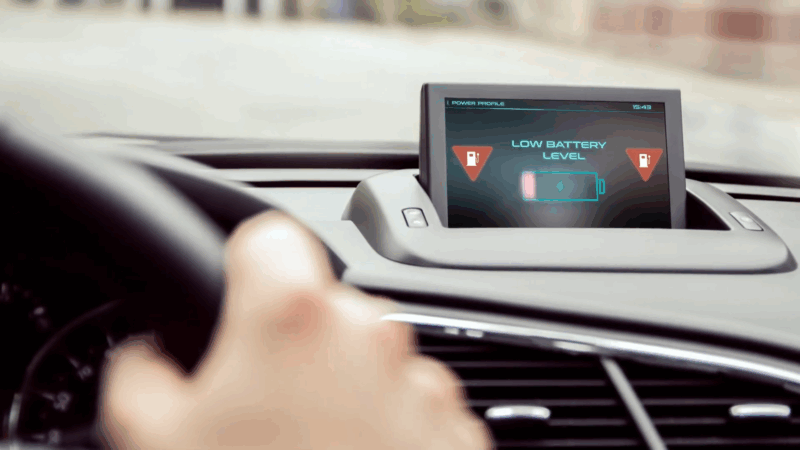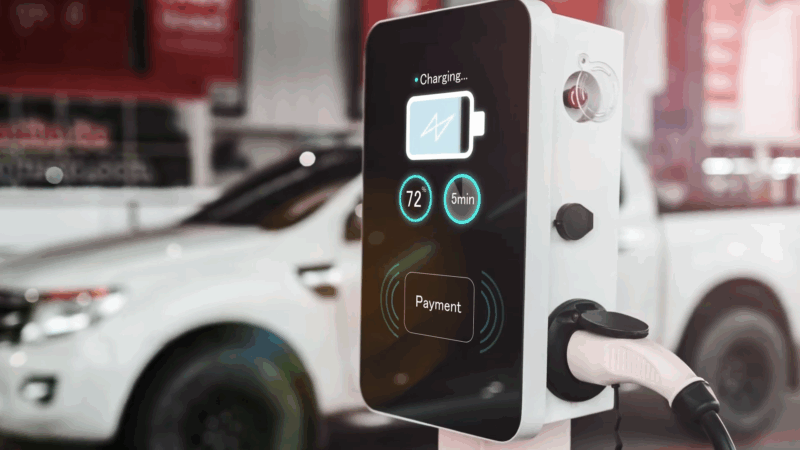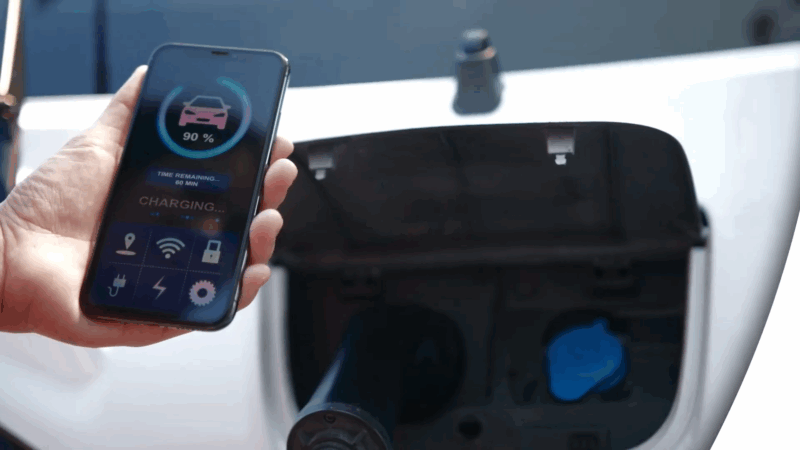If you’re considering buying an electric vehicle (EV) or already own one, one of the most common and important questions you’ll encounter is this:
Most EV batteries today are designed to last between 10 and 20 years, with warranties covering at least 8 years or 100,000 miles.
If you ever need to replace the battery outside warranty, you can expect to pay anywhere from $5,000 to over $20,000, depending on your vehicle model.
That said, most drivers will never have to replace their battery during normal vehicle ownership.
Now let’s break that down with real-world data, comparisons, and the information you need to make a confident decision about EV ownership.
The EV Battery Overview
The battery in an electric vehicle isn’t just one component—it’s the single most important and expensive part of the car. It determines your driving range, charging speed, and ultimately, the long-term value of the vehicle.
Modern EVs use lithium-ion batteries, similar in concept to your phone or laptop, but on a much larger scale.
These battery packs contain hundreds or thousands of cells, each of which contributes to the overall storage capacity (measured in kilowatt-hours, or kWh).
Most EVs on the market today have battery capacities ranging from 40 kWh (Nissan Leaf) to 100+ kWh (Tesla Model S).
The bigger the battery, the more range—and generally, the higher the replacement cost.
How Long Do They Last?
EV batteries degrade over time—meaning they lose their ability to hold a full charge—but this process is slower than many people expect.
Average Lifespan
Manufacturer Warranty
Most EV manufacturers back up their battery technology with robust warranties:
Manufacturer
Battery Warranty
Capacity Guarantee
Tesla
8 years / 100,000–150,000 miles
70% retention
Hyundai
10 years / 100,000 miles
70% retention
Ford
8 years / 100,000 miles
70% retention
GM (Chevy)
8 years / 100,000 miles
60–70% retention
Nissan
8 years / 100,000 miles
70% retention (new Leafs)
Warranties ensure that if your battery degrades faster than expected, you’re covered for a replacement or repair at no cost.
What Affects EV Battery Life?
View this post on Instagram
Battery degradation isn’t linear, and not all batteries age the same. Here are the biggest factors:
Charging Behavior
- Regular use of DC fast chargers (Level 3) accelerates degradation more than slow (Level 2) home charging.
- Charging to 100% all the time is harder on the battery than keeping it between 20% and 80%.
Climate
- Heat is the enemy. EVs in hot climates (e.g., Arizona, southern California) may degrade faster than those in cooler areas.
- Cold climates reduce range temporarily, but don’t cause long-term damage if the battery is managed correctly.
Driving Habits
- Aggressive driving (rapid acceleration, high-speed driving) uses more energy and generates more heat.
- Frequent deep discharges (running the battery to 0%) and full charges (100%) also strain the battery chemistry.
EV Battery Replacement Costs in 2025
EV battery costs are dropping fast! Discover how much lower they could go and what it means for the accessibility of electric vehicles:https://t.co/OzG9C3ws80
— Electrification Coalition (@ElectricRoadmap) August 13, 2024
Now for the big question: How much does it cost to replace an EV battery?
Battery prices are falling year over year, but they’re still expensive. The cost depends on several factors:
Cost Table for Popular EVs (2025 Estimates)
EV Model
Battery Size (kWh)
Estimated Replacement Cost
Notes
Nissan Leaf
40 – 62
$5,000 – $7,500
One of the more affordable swaps
Tesla Model 3 / Y
60 – 82
$10,000 – $15,000
Tesla offers full pack replacements
Chevy Bolt
66
~$6,000
LG batteries, some recalls covered
Ford Mustang Mach-E
75 – 98
$12,000 – $18,000
Larger packs, higher cost
Hyundai Ioniq 5
58 – 77
$6,000 – $10,000
Rapidly improving battery tech
BMW i4
83.9
~$16,000
High-end pricing
Keep in mind that labor costs can add $1,000 to $3,000 depending on the shop or dealership.
Battery Degradation: Real-World Data

Studies from Recurrent Auto and Consumer Reports show that battery degradation is much slower than most people expect.
Key Insights
The general takeaway is that most EV batteries will outlast the typical ownership period (6–8 years), and very few owners end up replacing their batteries unless there’s a defect.
Can EV Batteries Be Repaired Instead of Replaced?
Yes, many modern electric vehicles are built with modular battery pack designs, meaning the battery is composed of multiple smaller units called modules, each containing a number of individual lithium-ion cells.
This architecture allows technicians to isolate and replace only the defective module or modules rather than the entire battery pack. If just one or two modules are underperforming or failing, the cost to repair the battery can be significantly lower, often ranging from a few hundred to a couple thousand dollars, compared to the much higher cost of full replacement.
This modularity not only reduces expenses but also minimizes waste and extends the overall lifespan of the battery pack. However, it’s important to note that not all EV manufacturers make this kind of repair straightforward.
Some brands may lock battery diagnostics behind proprietary systems, or require that any servicing go through official dealerships, many of which do not currently offer module-level repairs.
As a result, owners may need to seek out independent EV repair specialists who have the tools and expertise to handle such repairs safely and effectively.
Are Battery Prices Going Down?

Absolutely.
According to BloombergNEF, the cost per kWh of EV batteries has dropped from over $1,100 in 2010 to around $130 in 2024, and is expected to fall below $100 by 2027.
This has massive implications:
Recycling and Second Life: What Happens After Retirement?
Electric vehicle (EV) batteries don’t simply become waste once they can no longer power a car effectively. Even after their driving range becomes insufficient for automotive use—typically when battery capacity drops below 70%—these batteries still hold considerable energy potential and can serve valuable purposes elsewhere.
Rather than ending up in landfills, most retired EV batteries go on to live a “second life” or are responsibly recycled for material recovery.
One promising path is second-life applications, where used EV batteries are repurposed for stationary energy storage. These systems can be used in homes, commercial buildings, and even utility-scale grids to store excess energy from renewable sources like solar or wind.
By doing so, they help stabilize the power supply and reduce reliance on fossil-fuel-based energy. Companies such as Tesla (with its Powerwall and Megapack systems) and GM Energy are actively integrating retired EV battery modules into scalable storage solutions, extending their useful life by several more years.
It seem EV batteries can generally be expected to last longer than the vehicle, with 60-70% capacity at end of the vehicle’s life, ready for a second life in the utility sector before recycling. https://t.co/lxIQXNDqQr
— Chris Bataille (@bataille_chris) August 3, 2022
When batteries reach the end of even their second life, the next step is recycling—a process that’s becoming more advanced and efficient. EV batteries contain valuable and finite materials like lithium, cobalt, nickel, copper, and manganese.
Through mechanical and chemical recycling methods, these materials can be recovered and reused to manufacture new batteries, significantly reducing the need for raw material extraction.
This entire process not only supports a more sustainable EV ecosystem but also helps build a circular economy—one where resources are reused rather than discarded.
As the EV market grows and more batteries approach the end of their service life, recycling and second-life programs will play a critical role in reducing environmental impact, lowering production costs, and securing material supply chains for the future.
Tips to Maximize Your EV Battery Life

Here are proven, practical habits you can adopt to extend the life of your EV battery:
- Avoid charging to 100% daily. Keep it between 20–80% for regular driving.
- Use Level 2 charging at home rather than DC fast chargers when possible.
- Don’t let your battery sit at 0% or 100% for extended periods.
- Precondition your battery in cold weather before driving or charging.
- Park in a garage or shaded area to avoid heat damage.
- Update your car’s software regularly—manufacturers often improve battery management algorithms.
Should You Be Worried About EV Battery Life?
@whichuk Will your electric car battery die if you get stuck in a bad traffic jam? We simulated a 75-minute one to put this concern to the test. #ev #evs #electriccar #electricvehicle #electric #electriccars #electricvehicles #cars #cartok #tesla #teslatok ♬ original sound – Which?
No, not at all. EV battery technology has matured significantly in the last decade, and batteries are now built to last as long as—or longer than—internal combustion engines. They come with strong warranties, degrade slowly, and are backed by rapidly advancing service and recycling infrastructure.
Unless you’re buying a very early-model EV with outdated battery tech, you can expect to drive your EV for 100,000 to 200,000 miles with minimal battery concern.
And even if you ever need a replacement, the cost is becoming more manageable each year—especially as refurbished packs and modular repairs become more available.
